#negi soba
Text
Duck Soup Nameko Mushroom Soba (Makes 2 Servings)

We bring you this recipe from our panel, “Anime Foodies: Laid-Back Camp Season 2”.
This is the first camping recipe we get from “Laid-Back Camp Season 2” as Rin goes solo camping over the New Year’s holiday in Episode 2. As a simple but hearty meal, she combines a pack of instant duck soup soba with some nameko mushrooms and a selection of other toppings to make her own personal toshikoshi – New Year’s Eve – soba. Since we don’t have access to that particular brand of instant noodle, we’ll be showing you how to make it from scratch.
6 Cups – Duck Dashi [See “Optional/Notes” for recipe used]
6 In. Length – Konbu
1/4 Cup – Katsuobushi
1/4 Cup + 1 TBSP – Kaeshi [See “Optional/Notes” for recipe used]
7 Oz. (200 Grams) – Soba Noodles
6 Oz. – Nameko Mushrooms (Shimeji Mushrooms)
2 4 Oz. Fillets – Panko-Crusted Pollack (Cod) [See “Optional/Notes” for recipe used]
2 – Eggs
2 Sheets – Nori
4 – Green Onion Bases (Negi)
To Taste – Togarashi
At home, place your duck dashi in a saucepan and add your konbu.
Turn on the heat and bring nearly to a boil until you see small bubbles forming around the edges of the konbu and then remove the konbu.
Bring the dashi to a boil, place your katsuobushi into some cheesecloth, tie it into a bag, add to the boiling dashi for 30 seconds to 1 minute, and remove.
Turn off the heat, add the kaeshi, allow the dashi to cool, and store in jars or other containers to bring camping.
At camp, add your dashi and kaeshi mix to your pot and bring to a boil.
As this is coming to a boil, remove the bases to your nameko mushrooms, get your nori sheets to your desired size, and slice the green onions bases into rounds.
Once the soup base is at a boil, add your soba and boil for 2 minutes 30 seconds.
Add the nameko mushrooms and continue to boil for another 2 minutes 30 seconds.
Cut the heat and divide your soba, nameko, and broth mix evenly between your two serving bowls.
Top each with a pollack fillet, raw egg, a sheet of nori, half the sliced green onion bases, top with togarashi as desired, and serve.
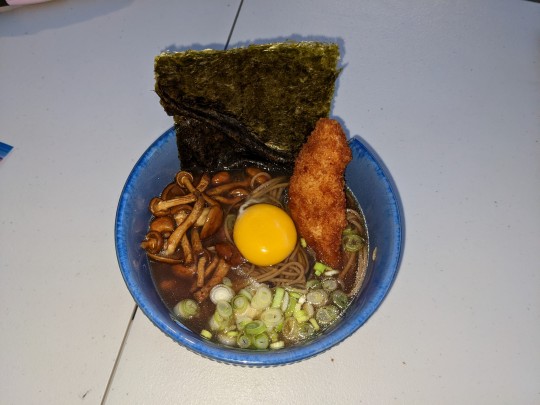
Optional/Notes:
The soba noodles include their weight in grams as they will often come packaged in small 100-gram bundles.
Duck Dashi as used here is created by taking 1 Roasted Duck Carcass and 4 Green Onions, adding those to 2 liters of Water, and bringing that to a boil. Once at a boil, cover, reduce the heat to low and let simmer for 2 hours while skimming as desired. Once the two hours is up, turn off the heat, and strain out the solids. The dashi can be used as is or placed in the fridge to cool to allow any excess duck fat to be skimmed off more easily.
A pre-made duck/other poultry stock will also work if you don’t wish to make your own.
Instead of using the cheesecloth in Step 3, you can merely add the katsuobushi to the saucepan and then drain through a fine mesh strainer once the necessary time elapses. The cheesecloth merely makes this step easier.
Kaeshi as used here is a mix of 1 Cup Soy Sauce, 1/3 Cup Sugar, and 1/4 Cup Mirin brought to a boil and immediately taken off the heat then allowed to cool down before being stored.
If you’re making this recipe at home, don’t worry about letting the dashi cool and storing it. Feel free to go right into Step 5.
If you are not able to get pre-cooked Panko-Crusted Pollack fillets to put over your noodles, you can readily use a frozen variety if you’re at home using an oven or fry them yourself if you’re camping as we did. Panko-Crusted Pollack as used here uses 2 4 oz. Pollack fillets, along with plates of Flour, beaten Egg, and Panko. Prepare the fish by getting the fillets mostly dry, coating in flour, then egg, and finally panko and frying in 350-375 degree oil for 3 minutes until golden brown.
If you happen to have access to instant soba noodles, you can skip Step 7 and boil the soba and nameko mushrooms together for the time noted in Step 8.
#anime#anime food#anime foodies#nos anime#camping#food#yuru camp#yurucamp#laid back camp season 2#camping food
8 notes
·
View notes
Text
to taste:
味わう(あじわう)
味見する(あじみする)
味がする(あじがする)
食べる(たべる)
飲む(のむ)
経験する(けいけんする)
food vocabulary
1. 食べ物 たべもの tabe mono Food
2. 日本料理 にほんりょうり nihon ryouri Japanese Cooking / Japanese Dish / Japanese Food
3. 朝食 ちょうしょく chou shoku Breakfast
4. 朝御飯 あさごはん asa gohan Breakfast
5. 昼食 ちゅうしょく chuu shoku Lunch
6. 昼御飯 ひるごはん hiru gohan Lunch
7. 夕食 ゆうしょく yuu shoku Dinner
8. 晩御飯 ばんごはん ban gohan Dinner
9. 夜食 やしょく ya shoku Supper
10. おかず okazu Side Dish
11. お八つ おやつ oyatsu Snack / Refreshment
12. 弁当 べんとう bentou Box Lunch
13. 駅弁 えきべん ekiben Train Station Box Lunch
14. 御飯 ごはん gohan Meal / Cooked Rice
15. 刺身 さしみ sashimi Sliced Raw Fish
16. 寿司 / 鮨 / 鮓 すし sushi Sushi
17. 天婦羅 てんぷら tenpura Tempura / Deep-fried Fish and Vegetables
18. 牛丼 ぎゅうどん gyuu don Rice topped with Beef and Vegetables
19. 親子丼 おやこどん oyako don Rice topped with Boiled Chicken and Eggs
20. 天丼 てんどん ten don Rice topped with Deep-fried Prawns & Fishes
21. 鰻丼 うなぎどん unagi don Rice topped with Glaze-grilled Eel
22. 鰻 うなぎ unagi Eel
23. 豚カツ とんカツ tonkatsu Pork Cutlet
24. カレーライス kare- raisu Curry and Rice
25. 鋤焼き すきやき suki yaki Thin Slices of Beef cooked with various Vegetables in a Heavy Iron Pan
26. お好み焼き おこのみやき okonomi yaki Thin and Flat Pancake cooked on a Hot Plate with bits of Meat, Seafood and Chopped Cabbages
27. 鉄板焼き てっぱんやき teppan yaki Grilled Meat cooked on Iron Plate
28. 焼き鳥 やきとり yaki tori Grilled Chicken / Broiled Chicken
29. 蛸焼き たこやき tako yaki Octopus Dumpling
30. 焼きそば やきそば yaki soba Pan Fried Noodle
31. 餃子 ギョウザ gyouza Dumpling stuffed with Minced Pork and Vegetables
32. 茶碗蒸し ちゃわんむし chawan mushi Steamed Egg Custard in Tea Cup
33. しゃぶしゃぶ shabu shabu Japanese Style Hotpot
34. 味噌 みそ miso Miso / Bean Paste
35. 味噌汁 みそしる miso shiru Miso Soup
36. ラーメン ra-men Ramen
37. うどん udon Noodle made of Wheat Flour
38. 蕎麦 そば soba Buckwheat Noodle
39. 餅 もち mochi Sticky Rice Cake
40. 餡パン あんパン anpan Japanese Bun filled with Red Bean Paste
41. 牛肉 ぎゅうにく gyuuniku Beef
42. 豚肉 ぶたにく butaniku Pork
43. 鶏肉 とりにく toriniku Chicken Meat
44. 羊肉 ようにく youniku Mutton / Lamb
45. 魚 さかな sakana Fish
46. 海老 / 蝦 えび ebi Prawn / Shrimp
47. 蟹 かに kani Crab
48. 豆腐 とうふ toufu Tofu / Bean Curd
49. 卵 たまご tamago Egg
50. 食パン しょくパン shoku pan Plain Bread / White Bread
51. 玉葱 たまねぎ tamanegi Onion
52. 胡瓜 きゅうり kyuuri Cucumber
53. 醤油 しょうゆ shouyu Soy Sauce
54. 酢 す su Vinegar
55. 山葵 わさび wasabi Japanese Horseradish
56. 油 あぶら abura Oil
57. 砂糖 さとう satou Sugar
58. 塩 しお shio Salt
59. 胡椒 こしょう koshou Pepper
60. 調味料 ちょうみ
りょう choumi ryou Seasoning / Condiment / Flavoring / Spices
Japanese English
1. yasai Vegetables
2. daikon raddish
3. nasu egg plant
4. nin jin carrots
5. bareisho(jagaimo) potato
6. satsuma-imo sweet potato
7. negi onion
8. tama-negi onion bulb
9. nin-niku garlic
10. kyuuri cucumber
11. kyabetsu cabbage
12. kabocha pumpkin
13. tomato tomato
14. kinoko mushroom
15. toomorokoshi corn
16. sato-imo taro
17. mame beans
18. daizu soy beans
19. shooga ginger
20. takenoko bamboo shoot
21. niga-uri bitter guard
22. horensoo spinach
23. seri parsley
24. hakusai chinese cabbage
アスパラ asparagus
おくら okra
かぼちゃ pumpkin
きゅうり cucumber
ゴーヤ bitter gourd
ごぼう burdock
さつまいも sweet potato
しいたけ shiitake mushroom
じゃがいも potato
ズッキーニ zucchini
だいこん Japanese radish
たまねぎ onion
ちんげんさい bok choy
トマト tomato
なす eggplant
にんじん carrot
ネギ leek
にんにく garlic
ピーマン green pepper
ブロッコリー broccoli
まいたけ hen-of-the-wood
モロヘイヤ Egyptian spinach
ルッコラ arugula
れんこん lotus root
2 notes
·
View notes
Photo
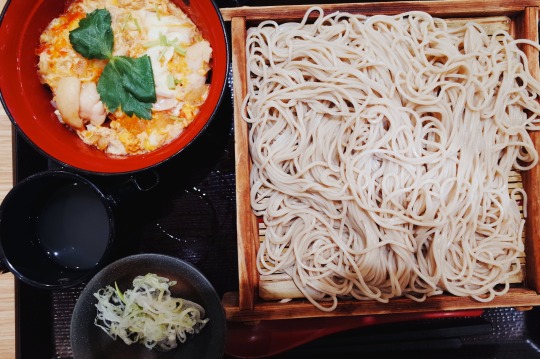
やめられない親子丼とそば
Unstoppable Oyakodon and Soba.
相性の良いそばセット。忘れたが・・右衛門という蕎麦屋?
どこの蕎麦屋に行ってもなんとなくオーダーしてみる。
#soba#soba_#oyakodon#negi#japan#japan_daytime_view#japan_photogroup#japanese_food#japanese#japanese_#japanfood#healty#healtyfood#soysous#soybeans#親子丼#親子丼セット#そば#そばセット#ネギ#つゆ#蕎麦つゆ#そば湯#野菜好き#二八蕎麦#foodgasm#foodporn#foodie#tokyojapan
1 note
·
View note
Video
"Noodles are not only amusing but delicious." ~ Julia Child . . . . . . . . #quotesoftheday #saying #egg #eggs #ramen #noodles #soba #negi #beef #foodprnshare #kitchenbowl #bhgfood #buzzfeast #foodie #photooftheday #instafood #tasty #hungry #delish #eating #foodlovers #instagood #hot #delicious #yummy #fresh #foodhunt (at Nagoya-shi, Aichi, Japan) https://www.instagram.com/p/BxodQHRhI5a/?igshid=vyb0szdtzqiz
#quotesoftheday#saying#egg#eggs#ramen#noodles#soba#negi#beef#foodprnshare#kitchenbowl#bhgfood#buzzfeast#foodie#photooftheday#instafood#tasty#hungry#delish#eating#foodlovers#instagood#hot#delicious#yummy#fresh#foodhunt
1 note
·
View note
Photo
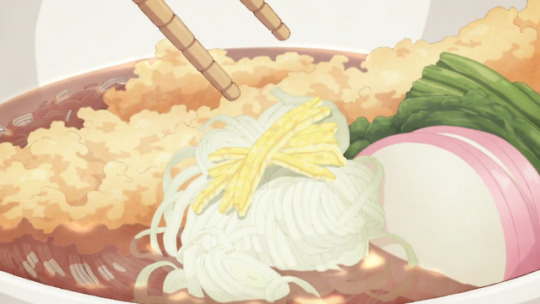
Tempura soba!
Emiya-san Chi no Kyou no Gohan, Episode 1
#Anime#Food#Anime food#emiya-san chi no kyou no gohan#today's menu at the emiya family#soba#noodles#new year#kamaboko#tempura#soup#negi#green onions#yuzu#Japanese food
94 notes
·
View notes
Photo

Plane food: greentea soba with negi(spring union).
1 note
·
View note
Video
鴨南蛮蕎麦 by toyohara
Via Flickr:
ネギの盛りが凄い。
1 note
·
View note
Photo
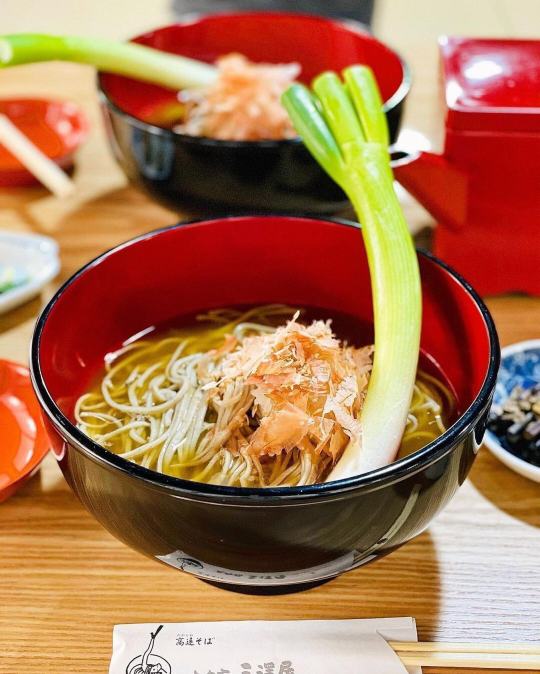
Traditional Negi-Soba of Ouchi-Juku, Fukushima Prefecture
📷 @vivis_life_journey
#japan#japanese#nippon#nihon#travel#food#japanese food#soba#fukushima#fukushima prefecture#ouchi-juku
2 notes
·
View notes
Photo
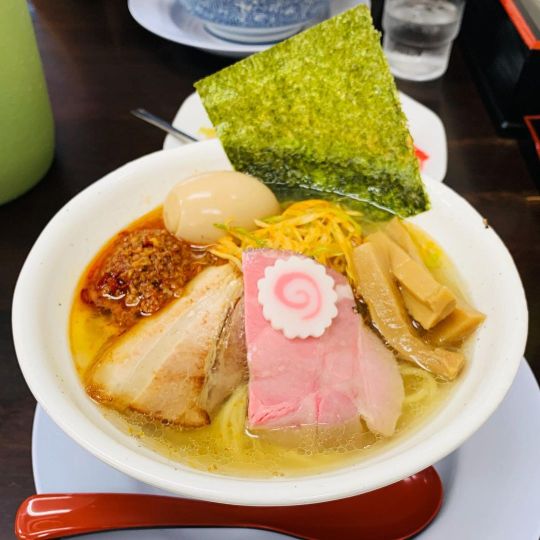
樺太屋は麺切れ、成龍は大行列で諦め…。 営業形態が変わったスガ井へ行ってみた。 辛葱SOBAをいただきました。 半炒飯は海苔に隠れてます…。 塩スープを楽しんでから辛肉を溶いて食べると美味しさ倍増。 #新潟ラーメン #辛葱 #ラーメン #ramen #ネギ #ねぎ #negi #塩ラーメン #ネギラーメン (メンドコロ スガ井) https://www.instagram.com/p/CTbuT7IBoly/?utm_medium=tumblr
2 notes
·
View notes
Text
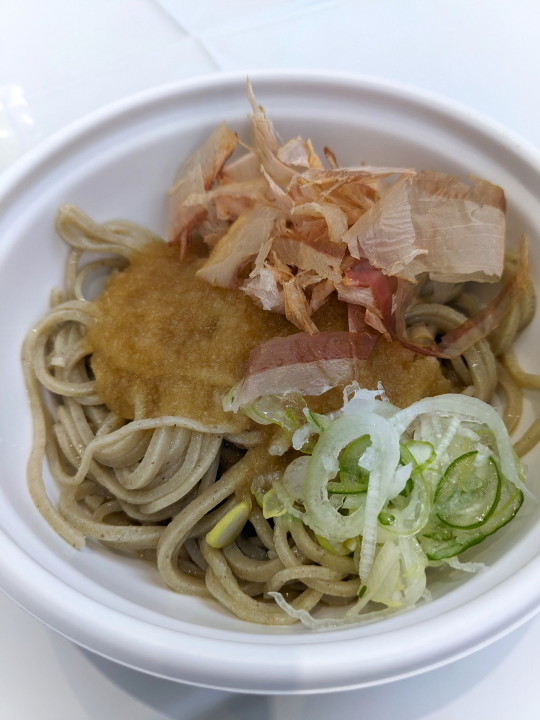
新そば
4 notes
·
View notes
Photo
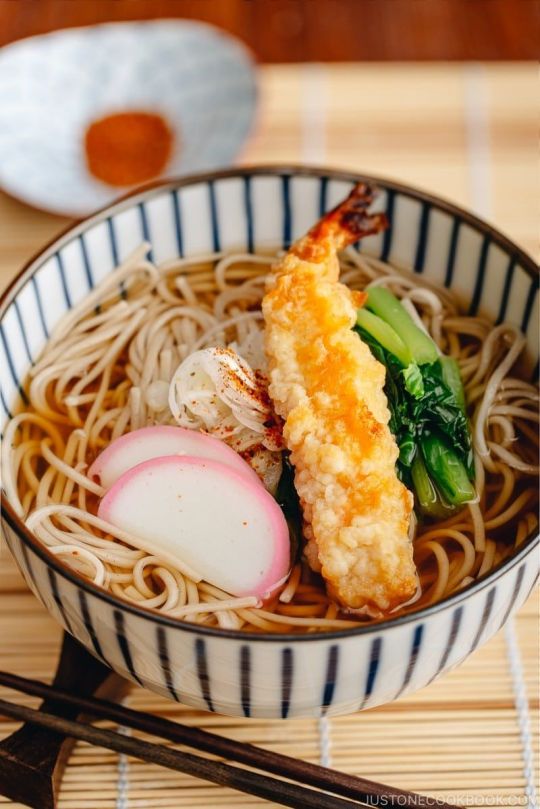
TEMPURA SOBA (Soba Noodle Soup, Tempura Buckwheat Noodles)
(From M/FoMT)
https://www.justonecookbook.com/soba-noodle-soup/
Ingredients:
4 cups water
1 piece kombu (dried kelp) (4" x 3” = 10 cm x 8 cm)
1 cup katsuobushi (dried bonito flakes) (1 cup = 10 g)
2 Tbsp mirin
1 Tbsp sake
2 Tbsp soy sauce
1 tsp kosher/sea salt
7 oz dried soba noodles (buckwheat noodles) (7 oz = 200 g)
Toppings:
1 Kamaboko (fish cake)
2 frozen shrimp tempura
1 bunch komatsuna (or spinach)
1 green onion/scallion (or Tokyo negi) (1 scallion = 3" Tokyo negi)
Shichimi Togarashi (Japanese seven spice) (or Ichimi Togarashi) (See Notes)
Directions:
[Optional] Soak kombu in water overnight (if you have time).
Transfer kombu and water into a saucepan. Bring the water to a boil. When it’s almost boiling, remove kombu from water and discard.
Add katsuobushi and simmer for 30 seconds. Then turn off the heat and let katsuobushi sink to the bottom of pan. Let Katsuobushi steep for about 10 minutes.
Strain the dashi over a large strainer lined with a paper towel set over another saucepan. Gently twist and squeeze the paper towel to release any remaining dashi into the saucepan.
Add mirin, sake, soy sauce, and salt in the dashi and bring the soup to a boil. Set aside until warming up later.
Insert a knife at the bottom of kamaboko to separate it from the wooden board. Then cut the kamaboko into 1/4 inch slices.
Slice green onion thinly and cut komatsuna into 2 inch pieces.
Boil the komatsuna in salted water. I first boil the hard bottom parts of komatsuna since they take longer to cook. Then add the leafy part later. Once they are tender, take them out and soak in ice water to stop cooking. Drain well.
Bake shrimp tempura at 400F (200C) for 15 minutes, or according to the package instructions.
Meanwhile boil two large pots of water (See Note). One for cooking soba noodles and the other pot for warming up the noodles after washing them. Cook soba according to the package instructions less 30 seconds*. Mine says cook for 4 minutes, so I cook 3 minutes and 30 seconds. Unlike pasta, you do not need to add salt to the water.
Drain the soba noodles and wash the noodles with hand under cold water to get rid of slimy texture.
Then transfer the soba noodles into the other pot of boiling water to warm up the noodles again. Once they are warm, drain and place them into a serving bowl.
Pour hot soup over the noodles and place toppings. Sprinkle shichimi togarashi or ichimi togarashi if you like it spicy. Serve immediately.
Notes:
You can use Ichimi Togarashi or Shichimi Togarashi (Japanese seven spice)
If you want to save time, just boil one pot of water, cook according to the package instructions (4 minutes), rinse under cold water, and then put the noodles directly into a bowl.
If you have Mentsuyu, you can dilute it with hot water to make a soup broth.
Adjust the seasoning as you like - to make it saltier or sweeter. I intended to bring out good dashi flavor so my seasonings may be too light for some of you.
#food#recipe#recipes#harvest moon#story of seasons#cookbook#tempura soba#tempura buckwheat noodles#soba soup#main dish#soup#kombu#bonito flakes#spinach#green onion#scallion#mirin#sake#soy sauce#salt#soba noodles
24 notes
·
View notes
Text
22/05 : On mange quoi au Japon ?
Une de mes grosses surprises après une demi année au Japon est la nourriture. Le Japon est très densément fourni en matière de restaurant et cela s’explique par la grande variété de plats qu’on peut trouver, ainsi que par l’amour qu’ont les Japonais pour la nourriture. Contrairement à la France, il est possible de manger très correctement pour une dizaine d’euros et les Japonais ont globalement tendance à accepter une grosse dépense s’il s’agit de bien manger.
Notez que la presque totalité de ces photos ont été prises par moi même, au restaurant ou lors d’une séance de cuisine chez moi.
La base au Japon, c’est le bento, assemblage de 5 ou 6 petits plats différents accompagné de riz, le tout placé dans une boite compartimentée plutôt esthétique et bon marché (entre 5 et 10 euros). Le soucis, c’est qu’on ne sait jamais ce qu’on mange donc gare aux surprises !
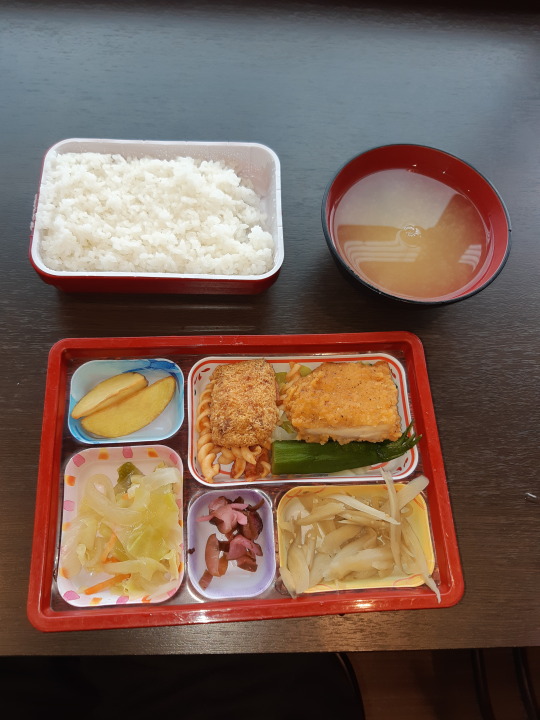
Un autre incontournable, le ramen. Il s’agit d’un bouillon de nouilles dans lequel on peut trouver de la viande (chashu), de la ciboule (negi), des pousses de bambous (menma), de l’oeuf, du naruto (un pâté de poisson blanc et rose), du nori... les déclinaisons sont assez nombreuses : le bouillon peut être au miso ou à la sauce soja, plus ou moins épicé, gras, fort en dashi (ce qui sert de base au bouillon)... de même, les nouilles peuvent être plus ou moins cuites ou épaisses (les ramen de Sapporo ont généralement des nouilles un peu plus épaisses). Dans certaines chaines, cela peut faire l’objet d’une customisation personnelle en fonction de vos goûts.

Les Japonais aiment beaucoup les nouilles. Une autre sorte est ce qu’on appelle Udon, ce sont des nouilles de blé assez épaisses qui se mangent de plusieurs façons : tout simplement en bouillon chaud accompagné de tenpura par exemple

Ou bien dans un bouillon de curry accompagné de viande de boeuf. On appelle ça un Kare udon. Le restaurant dans lequel j’ai pris l’image ci dessous l’accompagne avec des brochettes de Oden. Plat d’hiver, c’est généralement des mets assez spéciaux qui cuisent longtemps dans un bouillon de dashi. Il y a ici du konnyaku (gelée de konjac) et du daikon cuit (radis). Bizarre hein ?

Pour rester dans le domaine du curry, on en trouve également beaucoup ici. C’est apparenté à un plat occidental car il a été introduit au Japon au 19è siècle, à un moment où l’Inde était sous administration anglaise. Les curry ici sont assez peu épicés et simples à faire

Retournons dans le domaine des nouilles et passons au Soba. Ce sont des nouilles de sarrasin qui se mangent de plusieurs façons également. La première est la plus simple : froids à tremper dans une sauce soja, le tout en général dans un beau plateau en bois et en quantité !
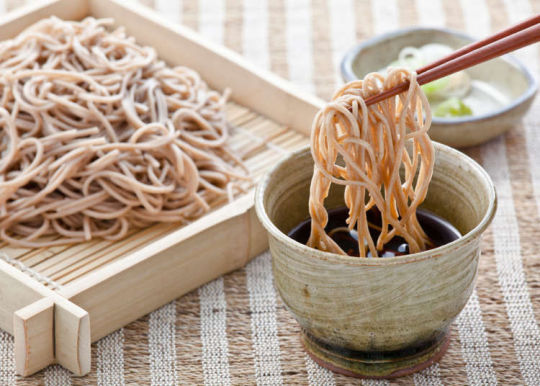
La seconde, cuits en yaki soba. On peut trouver ça dans des teppanyaki (qui contrairement n’implique pas forcément un cuisiner privé. Il s’agit en fait d’une table de cuisson devant vous (teppan) sur laquelle votre nourriture cuit ou reste chaude
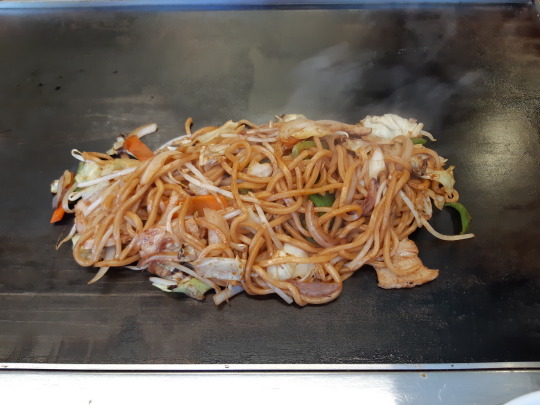
Une autre façon de les manger est en tsuke soba. Les soba sont également servis froids mais accompagnés d’une bouillon de viande et de bambou dans un bol à côté. On trempe les nouilles froides dedans pour les manger ce qui fait un drôle de chaud/froid dans la bouche
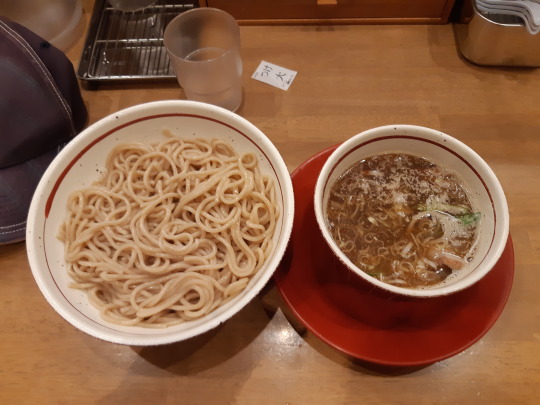
Vous commencez à le comprendre, les Japonais aiment beaucoup la viande. Très difficile d’être végétarien ici, personnellement j’ai décidé de ne pas me priver au restaurant (donc tous les midis) mais de manger exclusivement végétarien le soir (oui ça fait quand même beaucoup). L’expérience carnivore d’excellence reste le yakiniku, littéralement “viande cuite”. On en trouve énormement au Japon, la plupart avec des forfaits “boisson et viande à volonté” et pour une 15aine d’euros minimum (on en a fait à 50 euros, tout dépend de la qualité souhaitée). Un petit teppan devant vous et vous demandez la viande que vous voulez

Les katsu sont également très populaires au Japon. Le plus célèbre est le tonkatsu, “katsu” est l’abréviation de “cutlet” signifiant côtelette” (et pourtant je n’ai jamais vu d’os, c’est même généralement de la viande tendre), et “ton” est une des manières pour dire “porc”. C’est donc du porc pané et frit, accompagné de riz, de chou, soupe miso et d’une sauce spéciale. Un de mes plats préférés au Japon !

On peut trouver des dérivés comme le gyuukatsu qui consiste à du boeuf pané et frit. J’en ai mangé une seule fois, mais c’était excellent avec 4 façons de le manger : sauce curry (en haut à gauche), et en bas de la sauce soja, du poivre/sel et de la sauce Worcester

En terme de snacks au Japon, il y a également de tout car les Japonais adorent grignoter et manger sur le pouce. L’incontournable est clairement les onigiri, ces fameuses boulettes de riz fourrées à divers goûts (thon mayonnaise, saumon, prune, algue, natto...). C’est extrêmement populaire au Japon, on en trouve le plus facilement au konbini (épicerie de quartier, voir photo) mais on peut en avoir de meilleure qualité dans des comptoirs spécialisés
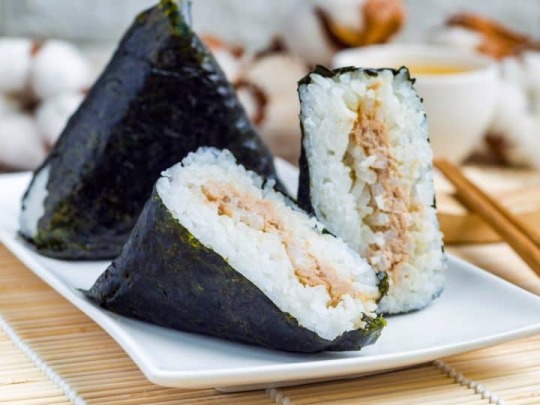
On trouve aussi une des spécialités d’Osaka, les takoyaki, littéralement “poulpe cuit”. Ce sont des boules de pâte, généralement bouillantes à se cramer la bouche, contenant un petit bout de poulpe dedans et agrémenté d’une sauce un peu acide. Ci dessous une photo de la tako party organisée par un collègue chez lui et sa femme : on a fait cuire nos propres takoyaki sur l’appareil qui va bien (et qu’on ne trouve pas chez nous pour sûr)
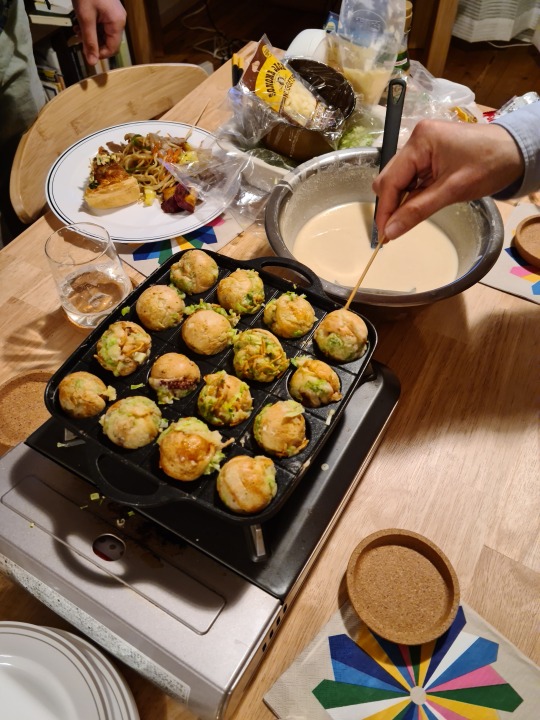
Restons à Osaka et une autre de ses spécialités dont j’ai parlé, les okonomiyaki, “faire cuire ce que vous aimez”. Issus de la cuisine populaire, c’est à la base une pâte préparée à l’aide des restes de nourriture, de l’oeuf, du chou, cuit au teppan et recouvert de sauce (sucrée ou pimentée) et/ou de mayonnaise. Hiroshima les prépare à sa façon, plus structurés et en couches. On retrouve souvent de la bonite séchée au dessus ce qui donne une drôle d’impression car sous l’effet de la chaleur, ces feuilles fines de poisson se tordent indéfiniment!
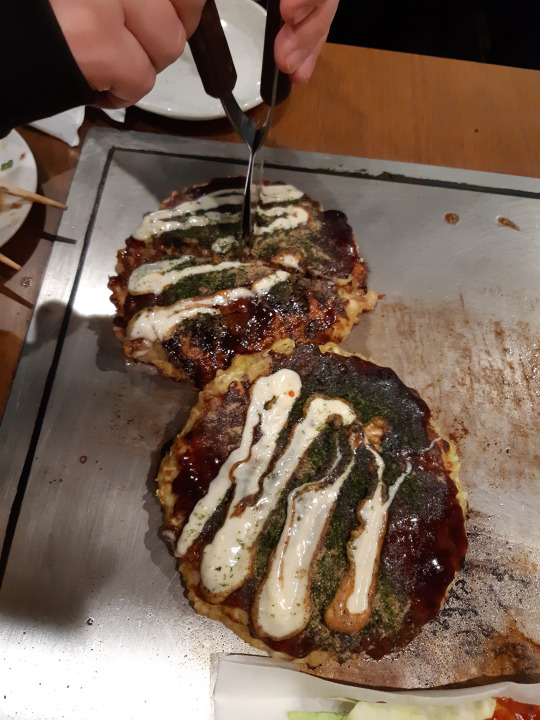
Les Japonais aiment aussi les hambagga, (hamburger). Mais attention, car ici hamburger et burger sont deux choses complètement différentes. Commandez un burger et vous aurez ce que vous pensez. Mais si vous commandez un hambagga, voilà ce que vous mangerez, un steak haché (en l’occurence j’ai pris un cheese hamburger, donc steak haché et un bout de fromage au dessus) :

En hiver, l’équivalent de la fondue est le nabe (signifiant casserole), une espèce de pot au feu préparé avec un bouillon...de dashi vous l’aurez deviné (pour démystifier ce bouillon, saché qu’il est réalisé à l’aide d’algues et de poisson séchés en général. C’est ce qui donne le fameux goût umami à la cuisine Japonaise). Dans ce bouillon on vient donc placer pleins d’ingrédients différents (chou chinois, viande, champignons, nouilles, tofu...) et chacun vient piocher ce qu’il veut à l’intérieur.
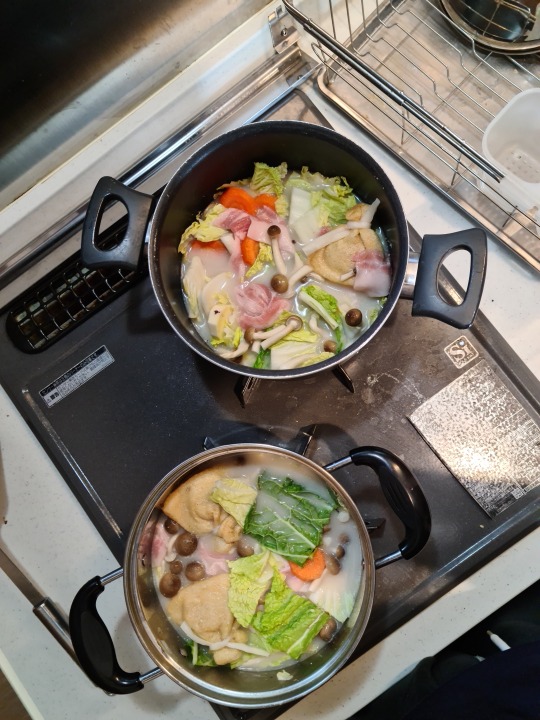
Ensuite, les donburi sont une grande famille très classique de plats, constitués d’un grand bol de riz vinaigré par dessus lequel on peut avoir plein de choses différentes relativement simples. Cela donne naissance au tendon (donburi de tenpura), gyuudon (de boeuf), oyakodon (voulant dire parent-enfant, car il est constitué de poulet et d’oeuf), ou encore de katsudon (si vous avez suivi, vous référer à la section “tonkatsu” et vous aurez une idée du résultat).
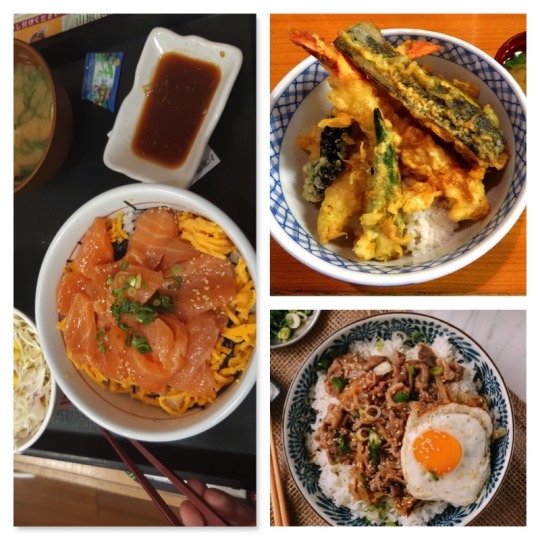
Une des choses les plus bizarres au Japon est pour moi le natto. C’est quelque chose très consommé mais que les européens ont du mal à apprécier. Il s’agit de graines de soja fermentées ayant une apparence et une texture gluante, visqueuse et une odeur très forte. Les Japonais en raffolent, certains en mangent même au petit déjeuner tandis que j’ai l’impression de souiller ma bouche dès que j’en prends un peu!
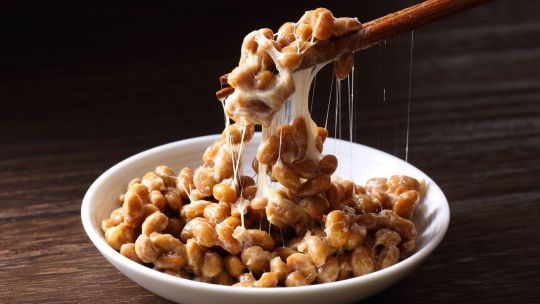

Terminons ce post par une touche sucrée! Ce sera assez rapide en réalité, le Japon n’étant pas un pays à dessert. On fait d’ailleurs rire nos collègues Japonais dès qu’on évoque (et exauçons) notre souhait de vouloir finir sur un dessert. Le dessert le plus original et se rapprochant le plus d’une douceur européenne est le taiyaki, une gaufrette en forme de poisson et fourrée généralement au anko qui est une pâte de haricot rouge sucrée (c’est également populaire en Chine et franchement pas si mauvais!)
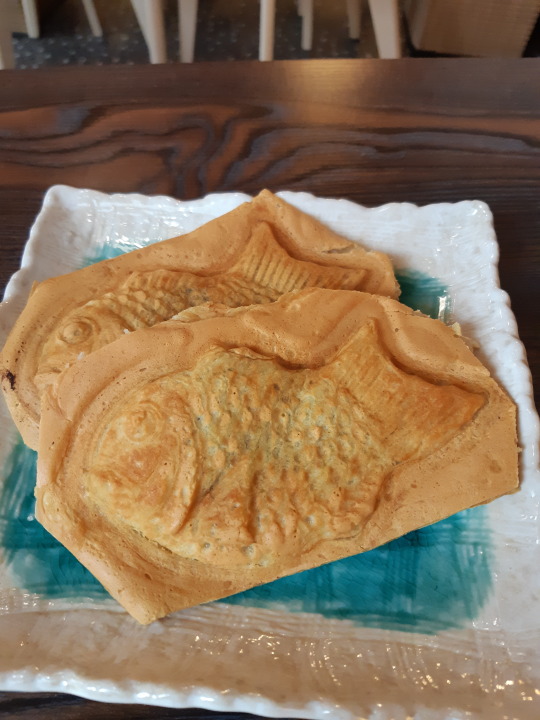
Toujours à base de haricot rouge, les dorayaki sont 2 petits pancakes collés entre eux par du anko. Mais les Japonais ont aussi plein de desserts à eux, généralement très fantaisistes qui relèvent plus de la décoration que de la nourriture, en témoignent ces glaces ou ce petit mochi (boule de riz gluant sucrée) qui vous fait une petit sourire :)
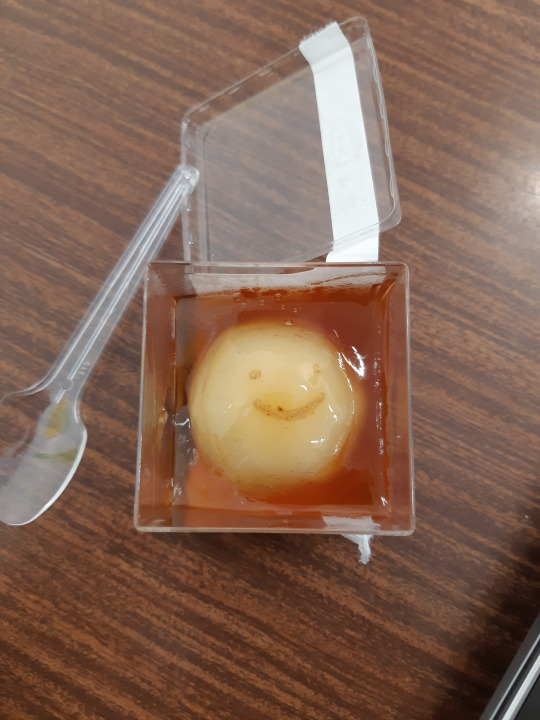
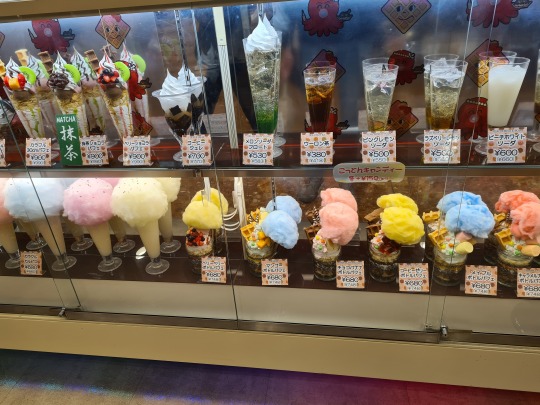
Voilà, il y a donc beaucoup à dire sur le sujet de la nourriture mais je pense avoir brassé les mets incontournables du Japon, du moins ce que j’en connais! Il y a encore des choses à dire car je n’ai pas parlé des célèbres sushi, gyoza, tenpura et yakitori, ou ni même parlé des alcools mais ce sera l’occasion pour un nouveau billet dans quelques temps :) Prochaine étape pour vous maintenant : venir déguster tout ça ici. A très vite !
4 notes
·
View notes
Text
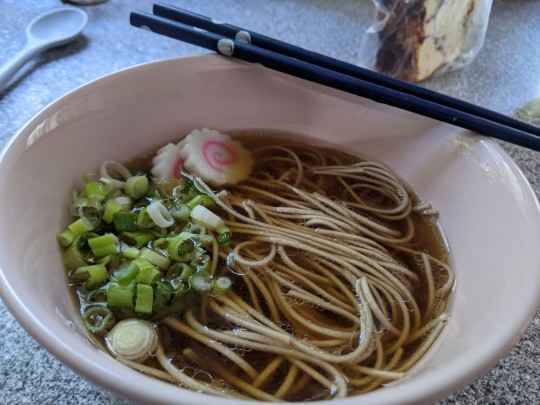
Finally perfected a quick and easy soba recipe.
First make the aroma oil by frying a handful of minced onions/leek/negi/shallot along with a bit of ginger and garlic in a few big spoonfuls of lard.You’ll only need a spoonful per bowl but it’s much easier to prepare a bunch of this at a time.
Broth is basically just a spoonful of Lee Kum Kee chicken powder in 300ml of water.
The tare is one spoonful shoyu and one of the strained liquid from making chashu.
Add all of the above together, cook and add your noodles and you've got a bowl of soba that could compete with any quick service counter eatery.
5 notes
·
View notes
Photo

ちくわ天そばネギ多め
Chikuwa-Ten-Soba-Negi-Ō-Me
25 notes
·
View notes
Photo

Soba, nori brown butter, ikura, negi, and imo powder. One of the new favs https://www.instagram.com/p/BrV2kW_hSiQ/?utm_source=ig_tumblr_share&igshid=rp6k9ui6w6ij
1 note
·
View note

